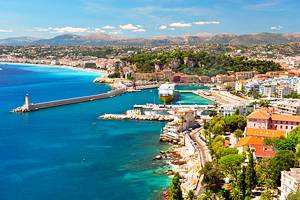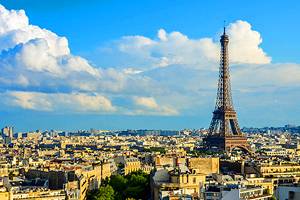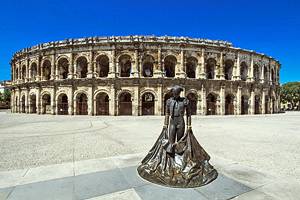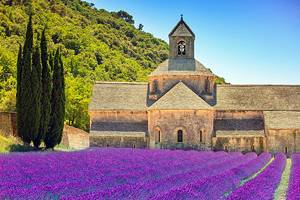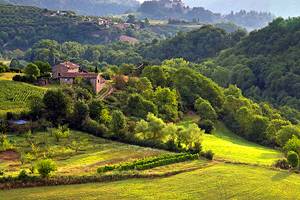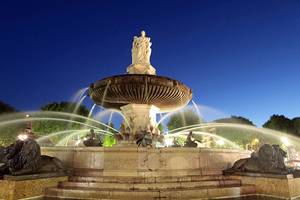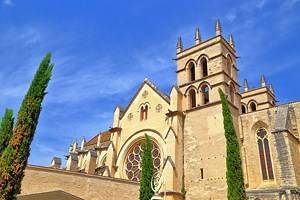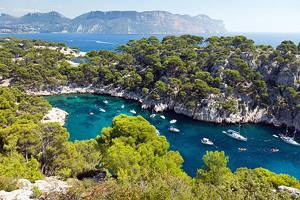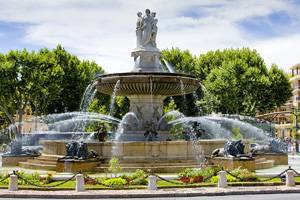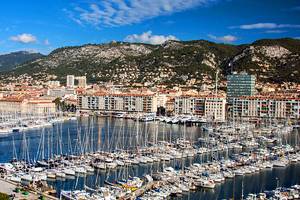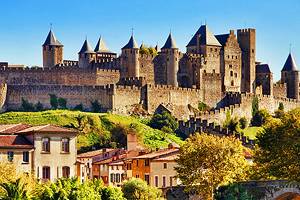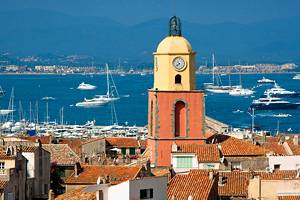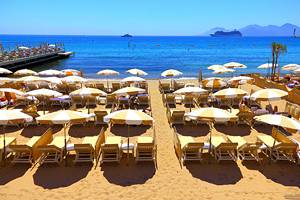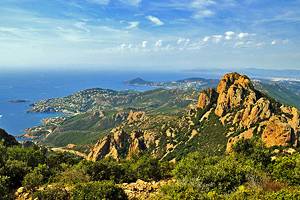Things to Do in Avignon
An excellent starting point for exploring Provence, the historic city of Avignon awes with its stunning papal palace. The UNESCO-listed Palais de Papes was the residence of seven Popes from 1309 to 1377 and is a testimony to the wealth and power of Christendom during the Middle Ages.
The tourist appeal of Avignon goes beyond its amazing UNESCO World Heritage Sites. This city is known as a center of art and culture. Attending festivals are some of the main things to do in Avignon throughout the year, from the popular summertime Jazz Festival to a traditional Christmas market in December.
Enjoy the relaxing Provençal atmosphere of this small town as you explore the quaint streets, such as the Rue des Teinturiers and elegant squares like the Place des Corps Saints. At the heart of Avignon, the Place de l'Horloge is lined with shady plane trees and filled with cafés where patrons sit and watch the world go by.
Avignon also makes a good base if you want to explore nearby towns and attractions. Discover more places to visit in and around this historic city with our list of things to do in Avignon.
- Palais des Papes
- Pont Saint Bénézet
- Rocher des Doms
- Musée du Petit Palais
- Basilique Métropolitaine Notre-Dame des Doms
- Eglise Saint-Didier
- Place de l'Horloge
- Basilique Saint-Pierre
- Avignon Festivals
- Musée Calvet
- Day Trips from Avignon
- Arles
- Provence's Ancient Roman Sites
- Hilltop Villages of the Luberon
- Saint-Rémy de Provence
- Villeneuve-les-Avignon
- Cavaillon
- Map of Things to Do in Avignon
- Other Interesting Places to Visit near Avignon
Palais des Papes

To visit the Palais des Papes is to witness the power of the Papacy during the Middle Ages.
Designated as a UNESCO World Heritage Site, this imposing palace was the most important monument in Christendom during the 14th century, when Pope Clement V moved the papal court from Rome to Avignon.
You can take a tour of the interior to see the 20 rooms that are open to the public. Although most of the furnishings have disappeared, the interior offers a sense of the vastness of the space. The halls, stairways, bedrooms, and chapels were all built on a grand scale around a central courtyard.
Highlights include the Great Audience Hall, an enormous hall embellished with wall paintings; the Grand Tinel banquet room; the Saint Martial and Saint John chapels, decorated with well-preserved frescoes created by the Italian painter Matteo Giovanetti; and the Great Clementine Chapel, a huge single-aisled church where official ceremonies were held.
From the Great Chapel, there is an entrance to the loggia where the large traceried Fenêtre de l'Indulgence (Window of Indulgence) offers a view of the Great Courtyard. From this window, the Pope used to give his blessings to the faithful.
Address: Place du Palais, Avignon
Official site: http://www.palais-des-papes.com/en
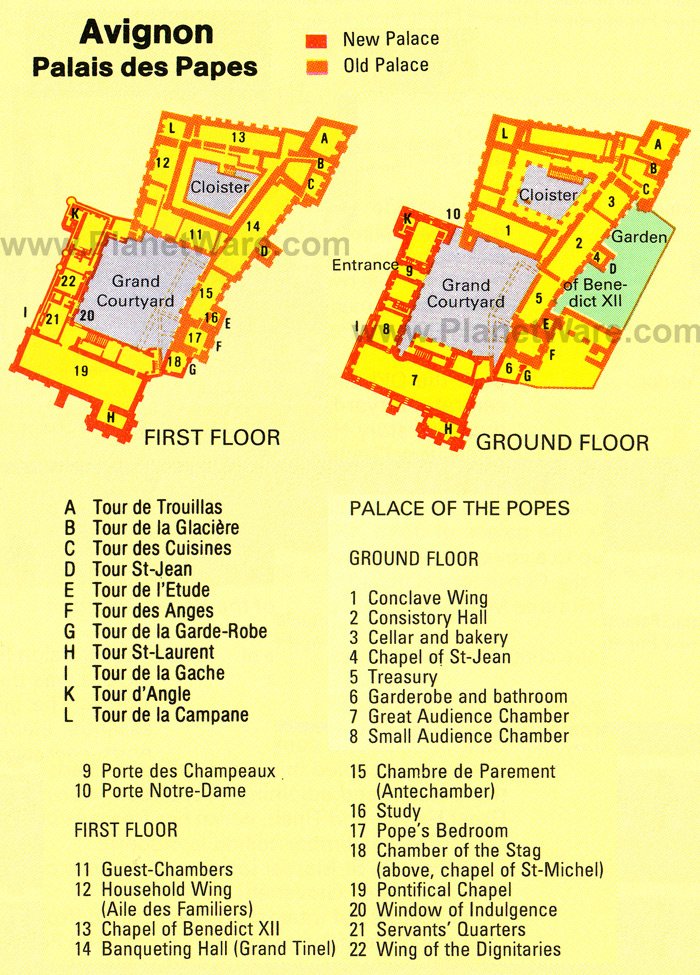
Pont Saint Bénézet

This graceful 13th-century landmark is one of Avignon's most iconic sites, and walking its length is among the top things to do in Avignon.
The Saint Bénézet Bridge is intriguing for its romantic half-ruined state and legendary association. Many are familiar with the famous song about the bridge ("Sur le Pont d'Avignon"), which was originally composed in the 16th century.
During the Middle Ages, the Pont Saint Bénézet was an essential crossing on pilgrimage routes between Spain and Italy. The bridge was used for transportation across the Rhône River until the 17th century (when the structure collapsed).
The Pont Saint Bénézet is listed as a UNESCO World Heritage Site and is open to the public as a museum. The site features multimedia displays that show how the bridge and its setting evolved over the centuries. The entry ticket includes an audio-guide. You can also admire the 13th-century Chapel of Saint Nicolas, which is part of the bridge.
A short walk from the Pont is a delightful public park, the Jardin du Rocher des Doms. Built on the Rocher des Doms hillside, this leafy English Garden, with its ponds, water pools, and terraces, provides sensational views and a refreshing environment for relaxation.
Address: Boulevard de la Ligne, Avignon
Rocher des Doms
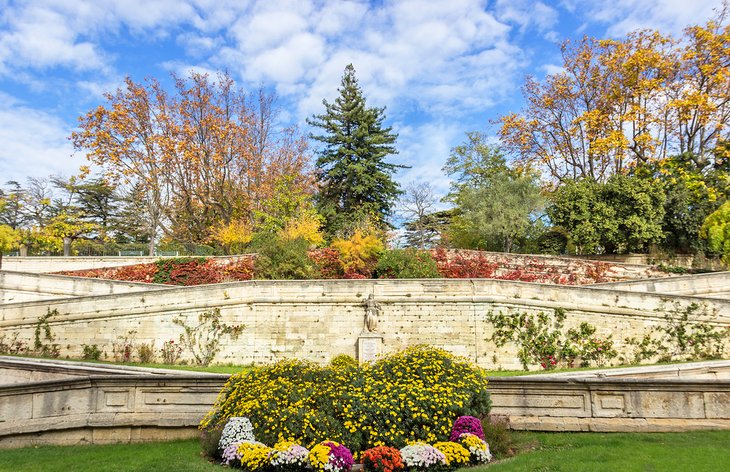
A short walk away from the Palais des Papes, the Rocher des Doms is a rocky promontory that offers an exceptional panoramic view of Avignon. This location has a gorgeous park on its summit, which is a wonderful place for a leisurely stroll.
From the gardens, you can see the Palais de Papes, the Pont Saint-Bénézet, the Rhône, and the islands of Barthelasse and Piot in the river, as well as the village of Villeneuve-lès-Avignon on the far bank.
Musée du Petit Palais
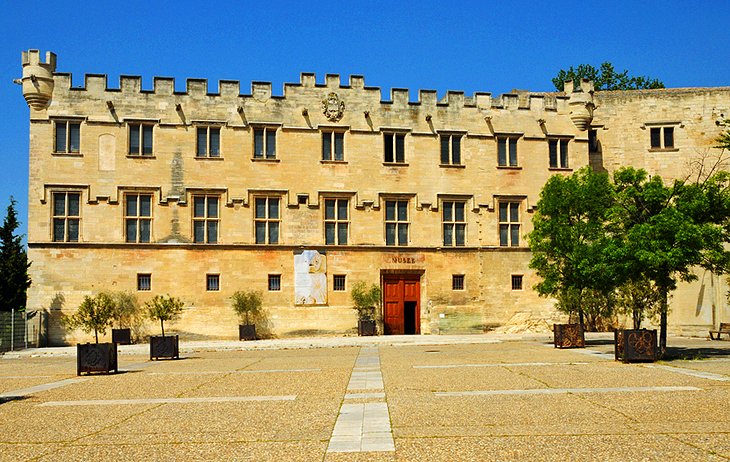
Built between the 13th and 15th centuries, the Petit Palais was the residence for Avignon's episcopal bishops before Pope Clement V created the Palais des Papes. This UNESCO-listed building was designed as a Gothic fort and is distinguished by the crenelated outer wall, a defensive feature typical of medieval and Renaissance fortresses.
The Petit Palais houses a fine arts museum with an exceptional collection of medieval art, Italian Renaissance paintings, Provençal paintings, and medieval Provençal sculptures. The collection includes masterpieces by Italian painters, including Sandro Botticelli and Louis Brea. The museum's most famous piece is Botticelli's Virgin and Child painting.
Temporary exhibits, related to fine arts topics, are held at the museum on occasion.
The Petit Palais museum has a café with outdoor seating in a quiet courtyard. The café offers a selection of tea, coffee, hot chocolate, and pâtisseries.
The museum is open year-round daily except on Tuesdays and holidays.
Address: Place du Palais, Avignon
Basilique Métropolitaine Notre-Dame des Doms
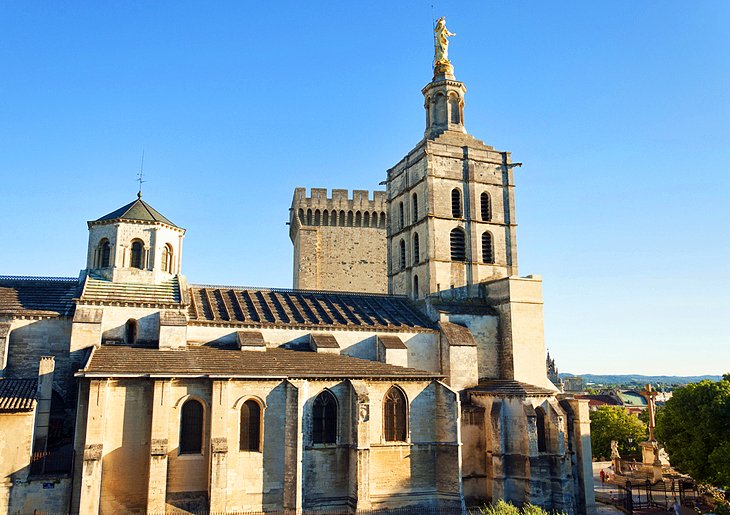
Although this building pales in comparison to the nearby Palais des Papes, the Basilique Métropolitaine Notre-Dame des Doms is still worth a visit. The monument stands on the Rocher des Doms hillside, which affords views of the Rhone Valley.
This beautiful cathedral has a serene 12th-century interior. While the nave, bell tower, and portico are Romanesque, other elements of the building were added in the 15th and 17th centuries.
Upon entering through the main doorway, you'll notice the remains of frescoes by Simone Martin. Inside the cathedral, there is an inspiring sense of space and intimacy.
The sanctuary is filled with noteworthy works of art, including a 12th-century marble bishop's chair, the Romanesque (former) main altar, the Late Gothic tomb of (pope) Jean XXII, and 15th-century frescoes portraying the Baptism of Christ.
On the cathedral's exterior, a splendid gilded statue of the Virgin crowns the tower with her hands outstretched to welcome the faithful.
The Basilique Métropolitaine Notre-Dame des Doms is open year-round daily.
Address: Place du Palais des Papes, Avignon
Eglise Saint-Didier
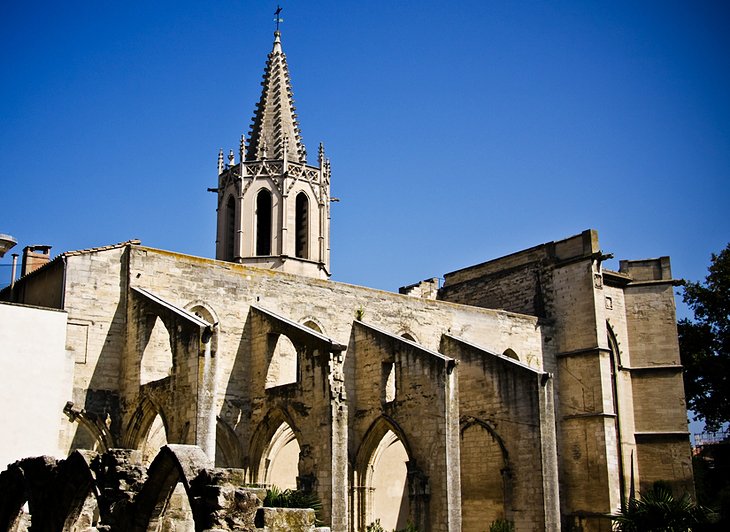
To the east of the Rue de la République stands the single-aisled Church of Saint-Didier.
Built between 1356 and 1359, the Saint-Didier Church exemplifies Provençal Romanesque architecture with its thick stone walls and large nave that gives the impression of an exceptional spaciousness.
This church contains one of France's earliest Renaissance works of art, the Way of the Cross, created between 1478 and 1481 by the Italian painter Francesco Laurana.
There are also remarkable 14th-century paintings such as the depiction of Christ's Crucifixion. Another noteworthy feature of this church is the Late Gothic pulpit with a flamboyant decoration style.
Address: Place Saint-Didier, Avignon
Place de l'Horloge
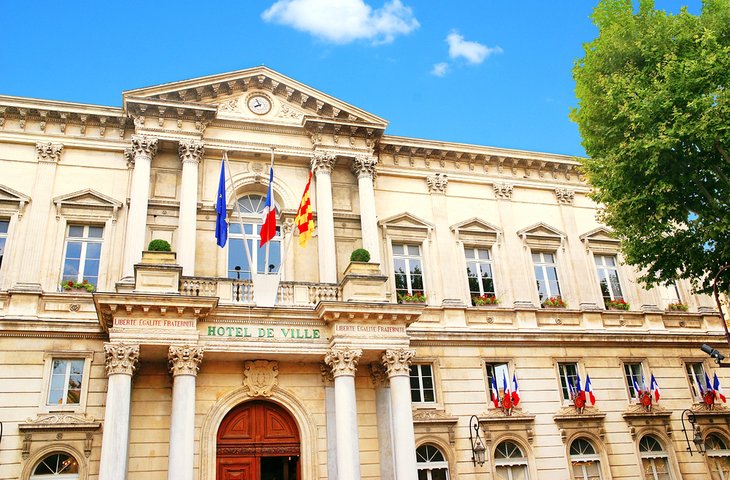
The idyllic Place de l'Horloge is a pleasant place to relax after a morning of sightseeing, at an outdoor café under the shady plane trees. Near the Palais des Papes, this beautiful square is the very center of Avignon life.
On the west side is the theater and the Hôtel de Ville (Town Hall). While the Hôtel de Ville was built in 1845, the building incorporates a charming 14th-century clock tower with life-sized figures on top, known as "jacquemarts," that strike the hours.
Basilique Saint-Pierre
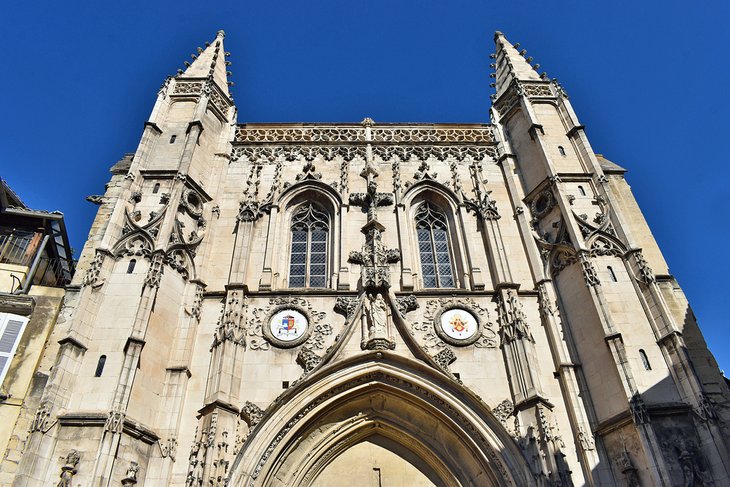
This site was dedicated to Saint Pierre of Luxembourg in the 7th century and the relics of the saint are kept here. Built in 1356, the Basilica of Saint-Pierre has a beautiful Gothic façade and carved Renaissance wooden doors dating from 1550.
The church houses several impressive sculptures, as well as paintings by Simon de Châlons, Parrocel, and Nicolas Mignard. There are also splendid Baroque choral scenes from the mid-17th century.
Classified as a Historic Monument, the Basilique Saint-Pierre is open to the public for visits daily year-round, free of charge.
Address: Place Saint-Pierre & Place des Châtaignes, Avignon
Avignon Festivals
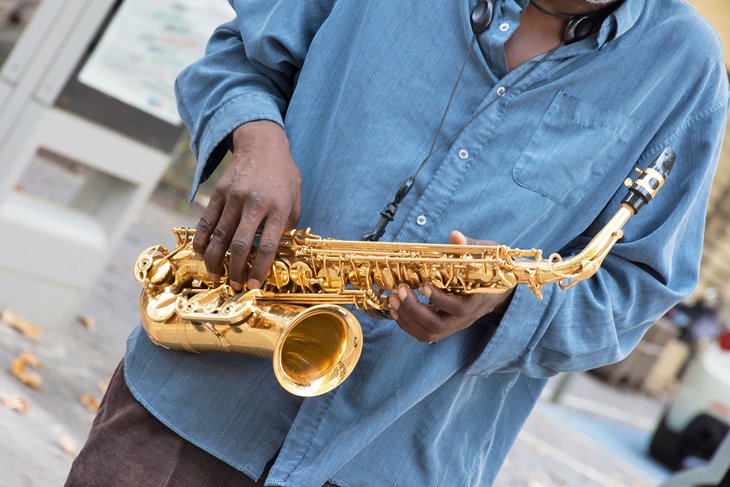
Avignon hosts dozens of cultural events and festivals throughout the year.
One of the biggest summertime events in Provence, the Festival d'Avignon presents a diverse cultural program that offers plenty of things to do, including theater productions, film screenings, dance performances, lectures, book readings, and workshops. The festival begins in early July and includes several events every day for over two weeks. Events are held at various indoor or outdoor venues throughout the city.
One of the most well-attended festivals is the Avignon Jazz Festival in late July and early August that takes place at the atmospheric Cloître des Carmes courtyard. This happening event is known as a "launching pad" for up-and-coming jazz musicians from all over Europe.
Other highlights of the cultural events calendar are the Agricultural Festival, which showcases products from farms of the region; the Médiévales des Carmes (a medieval festival that's free of charge) held on the second weekend of September; the Parcours de l'Art - Contemporary Art Festival in October; the Blues Rock Festival, in the nearby own of Châteaurenard, in October; and a Christmas market in December.
Musée Calvet
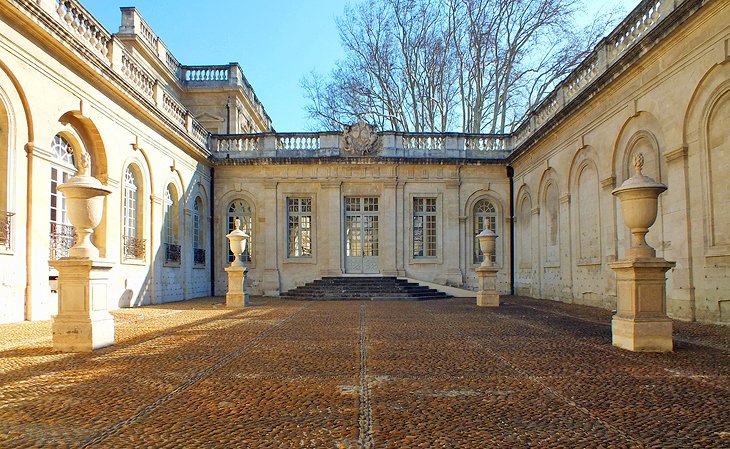
The Musée Calvet has a wonderful collection of antique sculptures, medieval paintings by Provençal masters, Italian paintings from the 16th to 19th centuries, French paintings from the 16th to the 20th centuries, as well as a selection of Spanish and Dutch works.
The museum began as the private collection of the doctor, a native of Avignon, Francois Esprit Calvet. Since 1833, the museum has been housed in the 18th-century Hôtel Villeneuve-Martignan near the Place de l'Horloge.
Address: 65 Rue Joseph Vernet, Avignon
Day Trips from Avignon
Arles
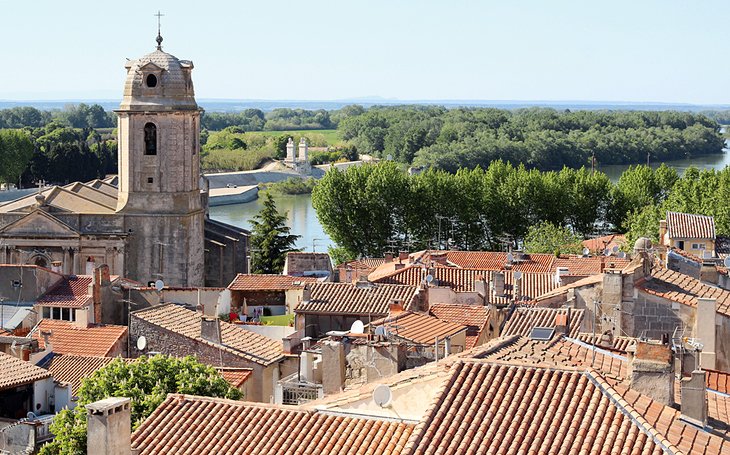
Only a 20-minute train ride from Avignon, Arles is a typical Provençal town, with a slow-paced lifestyle, pleasant outdoor cafés, and fascinating historic sites.
The highlights of Arles include a well-preserved 1st-century Roman Amphitheater and a UNESCO-listed Romanesque church.
For art lovers, the Fondation Vincent van Gogh is not to be missed, along with the Van Gogh Self-Guided Walking Tour, which identifies the landmarks captured in Vincent van Gogh's vivid brushstrokes.
Provence's Ancient Roman Sites
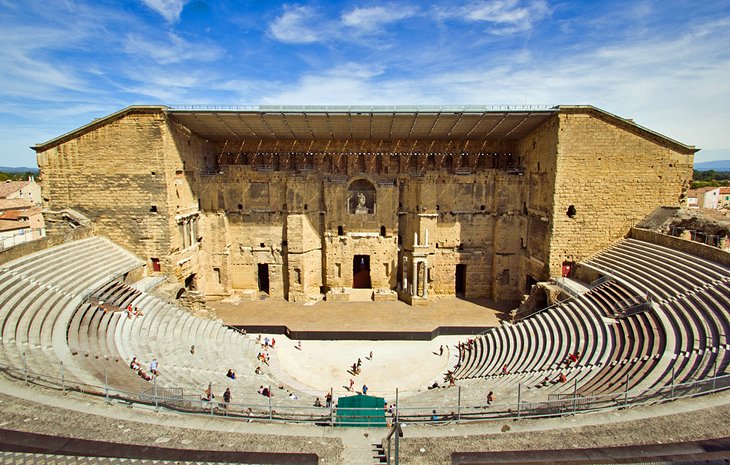
During ancient times, the area that is now Provence was home to a thriving Roman colony with bustling towns. Many of the Roman monuments have survived intact, such as the remarkable Roman Theater in the UNESCO-listed town of Orange that has seating for an audience of 7,000 people.
An array of well-preserved Roman monuments also await in Nîmes, a cultured town with an appealing old-world ambience. More fascinating archaeological sites are found in Vaison-la-Romaine: the remains of Roman porticoed houses, exquisitely detailed mosaics, and paved streets featuring gutters.
The sophistication of classical-era Roman civilization is perhaps best seen in the UNESCO-listed Pont du Gard aqueduct, a masterpiece of civil engineering that extended for 50 kilometers to supply water to the region.
A good way to see some of these amazing sites is by taking an organized tour.
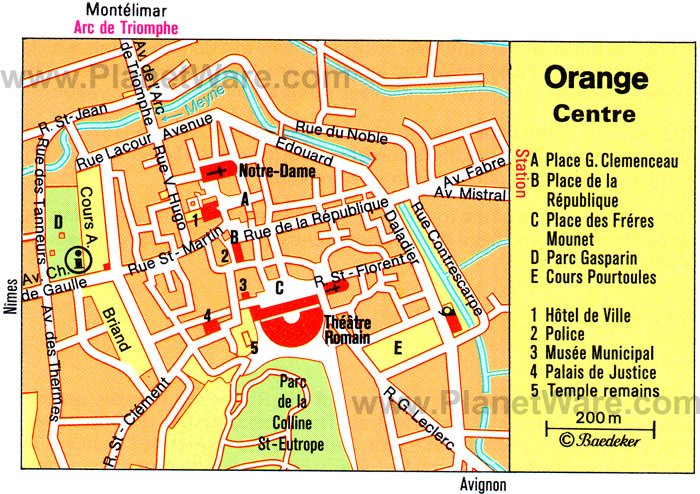
Hilltop Villages of the Luberon

With its vibrant lavender fields and picturesque medieval hilltop villages, the Luberon is an appealing off-the-beaten-track destination in the Haut-Vaucluse area of Provence.
This idyllic rural area is protected as a UNESCO-listed nature reserve and is only accessible by car.
Saint-Rémy de Provence
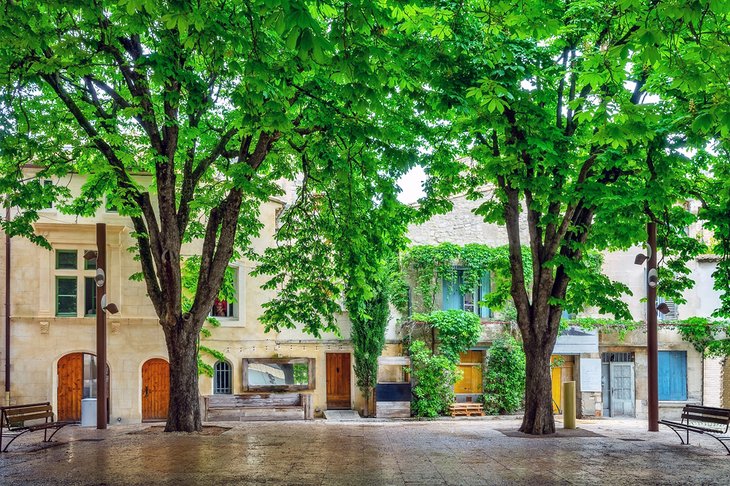
One of the sites that inspired Vincent van Gogh, Saint-Rémy de Provence is a characteristic Provençal village with elegant buildings, pleasant squares, and charming pedestrian streets.
About 20 kilometers south of Avignon in the northern foothills of the Alpilles, this village offers stunning views of the countryside.
Saint-Rémy de Provence is also well known for the Glanum Excavation Site where ruins from the ancient Graeco-Roman town are found. This extensive archaeological site includes the Monumental Gate from the 1st century BCE and a monument in memory of Julius Caesar.
Another famous person associated with the village is Nostradamus, who was born in Saint-Rémy in 1503. Admire the peaceful fountain that features a bust of Nostradamus.
Villeneuve-les-Avignon
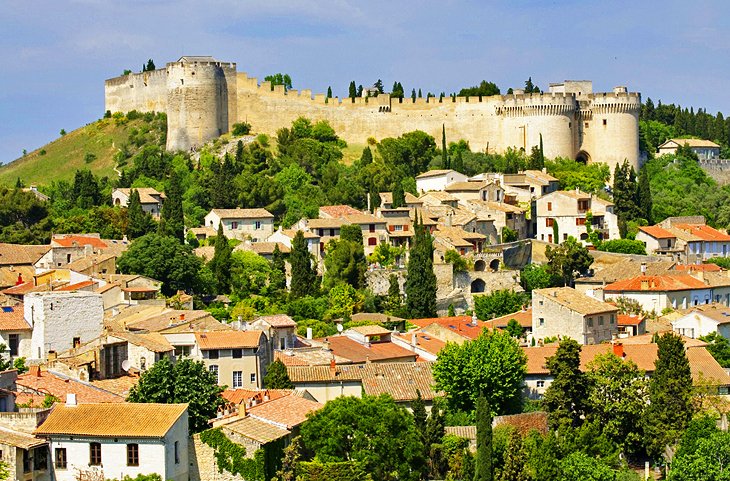
An easy 10-minute drive from Avignon, the village of Villeneuve-les-Avignon has a fascinating medieval fortress.
Built in the 13th and 14th centuries, the Fort Saint-André sits atop Mont Andaon and offers a magnificent view of Villeneuve, Avignon, Mont Ventoux, and the Lubéron and Alpilles mountain ranges.
The village also has an outstanding museum, the Musée Pierre-de-Luxembourg on the Rue de la Republique. One famous piece is the Coronation of the Virgin Mary, painted by Enguerrand Quarton in 1453. There are also noteworthy 17th-century paintings by great masters, including Philippe de Champaigne, Nicolas Mignard, and Reynaud Levieux.
Also worth visiting is the Chartreuse du Val de Bénédiction chapel built in 1352. The Gothic tomb of Pope Innocent VI lies within the chapel and a beautiful cloister adjoins the church.
Cavaillon
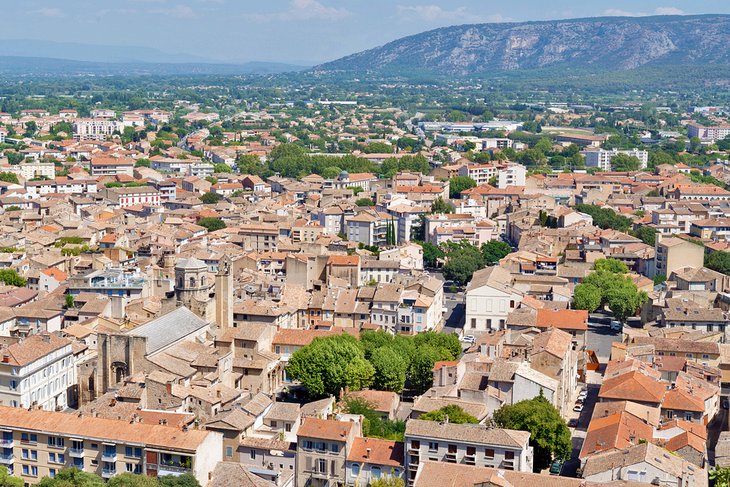
The little provincial town of Cavaillon has a rich cultural heritage, revealed in its remarkable historic monuments.
The Cathedral of Saint-Véran, founded around the 12th century, exemplifies Romanesque Provençal architecture. Its exterior is rather less attractive, but inside are lovely decorative capitals in the apse and a fine cloister.
Cavaillon also has a beautiful synagogue on the Rue Hébraïque (near Place Castil-Blaze) that is easily recognized by its arcades. Built in the Rococo style in 1772, the synagogue was later altered on many occasions. The synagogue now houses the Musée Juif Comtadin.
The Hôtel Dieu Archeological Museum on the Place Jean Bastide exhibits artifacts mainly from the Gallo-Roman period, along with Gallo-Greek antiquities and medieval items including a Merovingian altar-table. One room contains some interesting items of equipment from the old hospital dating from the 17th and 18th century.
A ticket to the Archeological Museum includes admission to the Judeo-Comtadin Museum in the historic synagogue on the Rue Hébraïque.
This sun-drenched town is surrounded by melon-growing farms. As would be expected, Cavaillon has a wonderful melon festival in early July.
Map of Things to Do in Avignon
Other Interesting Places to Visit near Avignon
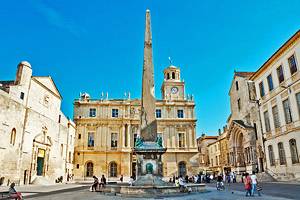
Highlights of Provence: Avignon is a great starting point to explore the many other interesting historic towns of Provence. The ancient ruins, leafy town squares, and outdoor cafés (painted by Van Gogh) of Arles are just 45 minutes away by train. Aix-en-Provence, another quintessential Provençal town, is one hour away by car or one hour and 30 minutes by train.
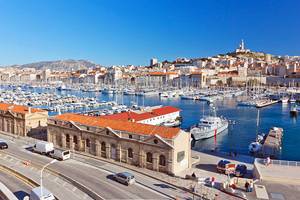
Seaside Splendor and Sunny Towns: The bustling seaport and cosmopolitan town of Marseilles is only 30 minutes away on the TGV fast train (or one hour by car). Many attractions near Marseilles are also worth a detour, such as the quaint fishing village of Cassis and the quintessentially Provençal town of Aix-en-Provence.
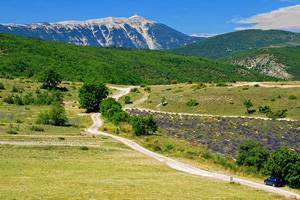
Charming Countryside: Travelers with more time will enjoy exploring the Lubéron area of Provence's Haut-Vaucluse countryside (about an hour's drive away), with its charming hilltop villages and picturesque landscape of rolling hills, valleys, and peaceful farmlands. The iconic Mont Ventoux in the Haut-Vaucluse is the highest mountain peak in Provence.


